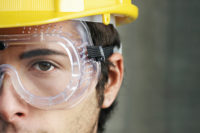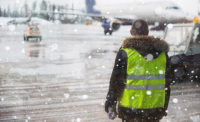New Age FR layers
Take advantage of the “science of comfort”

Wearing the right FR layers not only protects from arc flash and flash fires, it also reduces heat stress and improves performance. With so many options in this new age of comfortable performance fabrics, find what really matters when you want the best protection.
Burns due to flame remain the most common— and severe— of thermal injuries. According to the most recent (2014) report from the American Burn Association, more than 40 percent of all burns are from direct contact with flames, far outpacing scalding, electrical or chemical burns. And work-related injuries rank as the second largest source of flame burns.
Ensuring workplace compliance with FR clothing has been a difficult, longstanding issue, due mainly to the perception that early FR fabrics (which came on the market in the mid-1990s) just weren’t comfortable. FR-treated cotton materials then contained a treatment to the cotton fabrics that made them a little heavier—with some perceiving that the extra weight made them feel hotter. Over the years fabrics have improved dramatically— due to aggressive research and development and consumer-based performance testing by respected innovation companies. The result? Today’s FR fabrics provide protection and comfort—well beyond the basic protection of the early days.
New generation of fabrics
To improve comfort, FR properties are now built into the yarns that are then woven seamlessly into the fabric—rather than applied as a heavy treatment. A new generation of performance fabrics features natural fibers combined with inherent, non-melting fibers to maximize comfort. Some of these fabrics include a blend of inherent, hydrophobic (water repelling) and natural hydrophilic (water absorbing) fibers to provide temperature and moisture management.
Scientific research has rather quickly created a “science of comfort.” We can now measure the comfort of fabrics when they are used in extreme conditions. This “science of comfort” is typically determined by three factors: absorption, wicking and fast-drying capability. These are the keys that keep wearers cool, fresh and dry. Absorption is the rate at which moisture is pulled away from the skin and into the fabric. Wicking transports moisture evenly through the fabric to its surface, then allows it to disperse rather than remain trapped in the fabric next to the skin. Dry time measures fabric’s ability to dry.
The science of comfort as applied to FR has expanded to include lighter-weight performance fabrics (with high-level protection per ounce— better than earlier, heavier versions of the same fabrics), improved washability (FR protection will not wash or wear out for the life of the garment since it is embedded into the yarn rather than applied as a treatment), environmentally friendly (no chemical processes), and even odor control.
The net result of more comfortable fabric innovations is better compliance—more workers are more open to wearing protection. With new standards driven by OSHA and the desire to do right for our professionals, it is important to provide comfortable FR gear to improve safety.
The newest generation of lighter weight FR fabrics also protect against another safety hazard: heat stress. Heat stress affects workers exposed to extreme temperatures in their work environments—both indoors and outdoors. When the body cannot cool itself enough to maintain a healthy temperature, it can result in illness, incapacitation, and a distraction in dangerous environments. Heat stress related illnesses include heat rash, heat cramps, dizziness or fainting, heat exhaustion, heat stroke, and a worsening of existing medical conditions.
Enhance performance
Lighter weight FR is especially important to base-layer technology. Industrial companies are increasingly looking to require FR underwear as a baseline safety to protect more workers from the effects of burns, and to increase the level of arc protection from the result of layering garments. The first layer of clothing that someone puts on in the morning can become his or her last line of defense in a flash fire.
Imagine a scenario where a worker’s coverall or shirt is open a few buttons on the top—and their base layer is 100 percent cotton or non-FR poly-cotton blend because this helps the worker “stay cool.” The worker is exposed to a flash fire, and their non-FR base layers made of fabrics that do not extinguish, do melt and do drip increase the severity of burns. These types of base layer should always be avoided. But give a worker a lightweight FR base layer, and the worker is more likely to button-up, and if not, is better protected by their base layer if exposed to a flash fire.
The need to enhance performance by reducing heat stress and employing wicking technology is illustrated by motorsports. In April, NASCAR’s ToyotaCare 250 saw a flash fire occur in the pits due to a malfunction on the head of a gas can. As a result, NASCAR has mandated that entire race teams begin wearing more than just their exterior flame suit; now the crews must wear FR underwear, socks, balaclavas and gloves. Just like industrial requirements, the increased protection of the base layer has been credited in reducing both the number and severity of burn injuries for all types of motorsports.
The utility, oil and gas industries hold tremendous promise for the future of FR apparel and personal protective equipment. Stricter safety regulations and heightened awareness about safety have resulted in an overall higher standard of protection for workers. This is good news —our labor force will be safer. But compliance will remain a challenge if workers are hindered by their FR clothing. These new technologies are making sure workers do not have to sacrifice comfort to do their jobs well—and more safely.
Looking for a reprint of this article?
From high-res PDFs to custom plaques, order your copy today!




